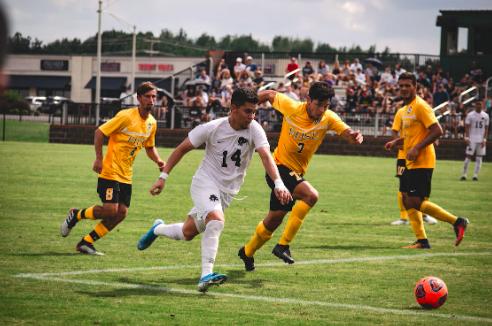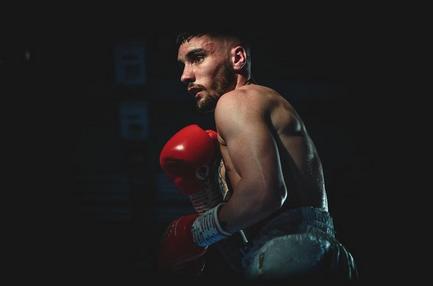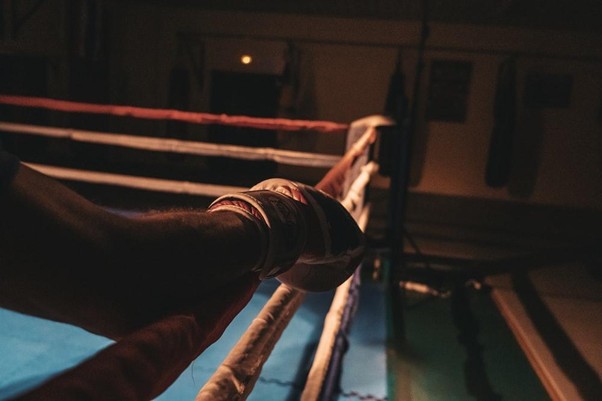Diversity Calls: MLS Looking to Bring a Systemic Change With More Black US Soccer Players

The push for diversity and inclusivity, including the representation of Black athletes in sports, has gained momentum. Major League Soccer (MLS) is committed to leading this movement by fostering a more diverse professional soccer landscape, especially for Black U.S. soccer players.
This article delves into the league’s initiatives to promote diversity, emphasizes the potential of soccer in the United States, and highlights the transformative role of MLS’s executive vice president and chief diversity, equity, and inclusion officer, Sola Winley.
Promoting Diversity in Baseball and Soccer
Instagram Link 1
The recent MLB All-Star Game, featuring players from historically black colleges and universities, highlighted the baseball league’s commitment to diversity initiatives. On the other hand, while the MLS All-Star Game didn’t explicitly focus on diversity, the league has actively designed programs to attract young Black U.S. athletes to soccer.
Amidst the question of which sport Black youth will embrace, soccer emerges as a strong contender. Soccer’s higher ceiling in the United States and its less contentious history with African Americans create a welcoming environment for potential young talents.
Sola Winley: Championing Diversity and Inclusion
Instagram Link 2
Two years ago, the MLS appointed Sola Winley as the chief diversity and executive vice president, equity, and inclusion officer. Winley’s mission is to build upon the league’s existing diversity initiatives, with a focus on increasing the presence of Black coaches and executives, widening youth participation, and removing barriers to entry for underprivileged communities.
Winley’s personal experience, growing up in New York with little exposure to soccer, drives his determination to change the dynamics. He believes in making soccer a regular part of sports and recreation for all youngsters, especially those from under-resourced Black communities.
Overcoming Barriers to Participation
Instagram Link 3
Soccer’s pay-for-play model remains a persistent barrier to increased Black U.S. participation in the sport. The cost of playing travel soccer, which averages around $3,000, often hinders access for families in lower-income communities. While charity efforts exist to help defray costs, they are not a sustainable solution for promoting inclusion.
Soccer’s image as a middle- and upper-middle-class sport in the United States contrasts with its working-class roots in other parts of the world. The MLS recognizes the importance of systemic change to create affordable and accessible avenues for young Black athletes to engage with soccer.
The Role of Black U.S. Coaches
Instagram Link 4
A key aspect of attracting young Black athletes to soccer lies in increasing the representation of Black U.S. coaches. This needs to happen at both team and academy levels. Currently, only two out of the 29 MLS teams have Black head coaches. This disparity undermines the aspirations of young players in search of role models they can look up to.
Ed Foster-Simeon, president and CEO of the U.S. Soccer Foundation, emphasizes that proactive efforts are essential to introduce soccer to underserved communities. Initiatives like building mini-pitches in school yards offer easy and affordable access to the sport, laying the groundwork for fostering talent from diverse backgrounds.
Keeping the Best Athletes in the United States
Instagram Link 5
Keeping the best athletes in the United States is a crucial aspect of Major League Soccer’s (MLS) long-term strategy. It helps them establish themselves as a respected force in international soccer. While the league has made significant strides in attracting young talent, retaining top players within the MLS remains a challenge. To achieve this goal, the league must focus on several key areas:
Enhancing Competitiveness and Level of Play
To keep top athletes in the MLS, the league must prioritize enhancing the overall competitiveness and level of play. This involves investing in player development programs, scouting, and coaching to nurture talent from a young age.
By providing a high-quality platform for player growth, the MLS can become an attractive destination for elite players. This is especially true for those seeking a challenging and competitive environment.
Competitive Salaries and Compensation Packages
A major factor that influences a player’s decision to stay in the United States or move abroad is the compensation package offered by the MLS. To compete with top European leagues, the MLS must continue to increase salaries. Furthermore, they must offer lucrative contracts to its best players.
Offering competitive wages not only helps retain existing talent but also attracts top international players to join the league.
Exposure and Recognition
Another critical factor in retaining athletes is providing them with exposure and recognition on the global stage.
The MLS should focus on securing broadcast deals with international networks to increase viewership worldwide. Greater exposure benefits the league. Moreover, it elevates the profiles of individual players. This makes them more appealing to sponsors and commercial opportunities.
Creating a Winning Culture
Winning and success on the field are powerful motivators for athletes. To keep the best players, the MLS must foster a winning culture within its teams.
This involves developing strong team identities, encouraging healthy competition among clubs, and providing the necessary resources to build competitive squads.
Infrastructure and Facilities
Top athletes are attracted to clubs that boast state-of-the-art training facilities and infrastructure. The MLS needs to continue investing in world-class training centers, stadiums, and medical facilities.
These facilities provide players with the necessary resources to enhance their performance. It also contributes to their overall well-being and development.
Conclusion
Instagram Link 6
The journey toward making soccer the preeminent sport in the United States requires a collective commitment to diversity and inclusivity. The MLS’s initiatives to promote Black U.S. soccer players represent a significant step toward this vision. This is mainly happening under the leadership of Sola Winley. By breaking barriers to participation, introducing soccer to underserved communities, and increasing Black representation among coaches, the MLS paves the way for the growth of soccer in the nation.
As MLS continues to evolve and invest in player development, it seeks to challenge established sports like football and basketball. The league’s commitment to diversity sends a powerful message. It states that soccer is a sport for everyone. Through intentional efforts, it aims to become the league of choice. Moreover, the goal is for it to become a respected force in international soccer in the years to come.



